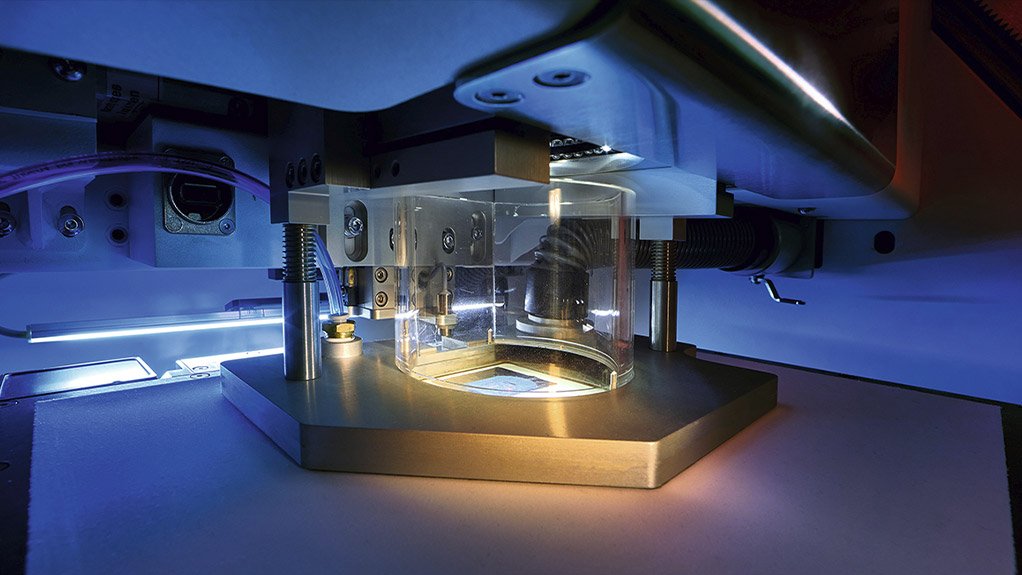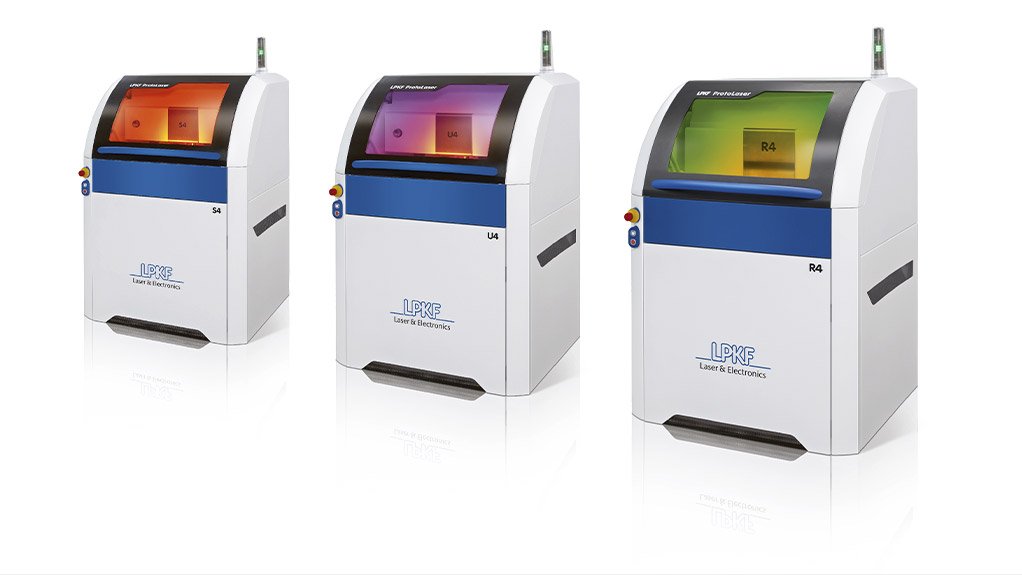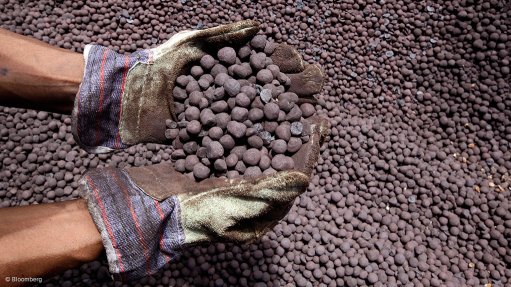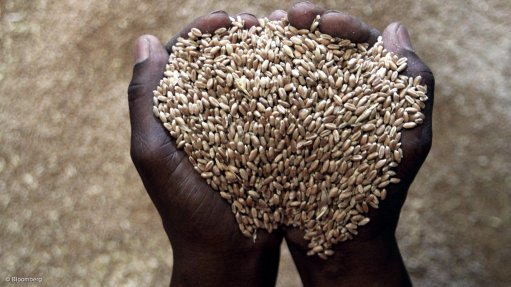Laser tech benefits medical implant industry



LASER OPPORTUNITIES The laser structuring process is also destined for manufacturing for microwave applications, flexible electronics, and glass
PROTO LASER SYSTEM The Proto laser system works precisely and fast and is easy to use owing to its sophisticated software
The use of laser manufacturing solutions provider LPKF Laser & Electronics’ laser technology ushers in new era in the medical implant industry.
A cochlear implant is a surgically implanted, electronic medical device that provides the sense of sound to people with hearing loss. In use for a few decades now, the device has enabled or restored hearing for 700 000 people. However, there are more than 460-million people with hearing loss globally.
More than 60 000 cochlear implants are sold yearly, but at least 60 000 babies are born with hearing loss in India and China alone. A single unit costs between $20 000 and $25 000 because the microelectrode array inserted into the cochlea is manufactured and implanted manually.
South Korea-based technology startup Todoc was founded to address this global shortage of cochlear implants by developing manufacturable cochlear electrode arrays using an ultrashort-pulse laser system, the LPKF ProtoLaser R.
The LPKF ProtoLaser systems are the benchmark for printed circuit board processing. They work precisely and fast and are easy to use owing to their sophisticated software. The laser systems are compact and undemanding. They only require a power outlet and compressed air and fit through any lab door. The laser structuring process is also predestined for manufacturing for microwave applications, flexible electronics, and glass.
The conventional cochlear electrode array consists of 16 to 22 platinum alloy-based electrode contacts and wires encapsulated in medical-grade silicone. The maximum dimensions are from 0.4 mm to 0.8 mm in diameter and 20 mm in length. A new cutting-edge standard was set 20 years ago with the aforementioned number of electrodes and wires.
Since then, many attempts have been made to fabricate the cochlear electrode array using a semiconductor fabrication process. Unfortunately, the base material and the process that are suitable for the semiconductor process are not biocompatible.
Todoc started to use the LPKF ProtoLaser U3 in 2016 and LPKF’s short-pulse laser system ProtoLaser R in 2018 to fabricate microstructures on platinum alloy foil. With the help of these laser systems, Todoc has now succeeded in accommodating 32 channels on these biocompatible alloys and automating production to the greatest possible extent. In this way, all 32 can be produced in a single pass.
To do this, Todoc CEO and founder Kyou Sik Min and his colleagues patterned lines 16 µm in width, spaced 32 µm apart, on platinum foil, and integrated 32-channel contacts and wires in a single process – rather than manually fabricating 22-channel electrodes.
The final electrode array is achieved after several steps of encapsulating the contacts and wires. With this production process, Todoc manufactured the first commercially viable cochlear electrode array in history.
After launching its first 32-channel cochlear implant system in the South Korean market this year, Todoc plans to expand the sales network globally. The company aims to make cochlear implant surgery available in developing countries for people with hearing loss who cannot benefit from cochlear implants owing to the imbalance between supply and demand in the current market environment. The goal is that people on all continents can be helped to hear again without having to worry about the costs.
Comments
Press Office
Announcements
What's On
Subscribe to improve your user experience...
Option 1 (equivalent of R125 a month):
Receive a weekly copy of Creamer Media's Engineering News & Mining Weekly magazine
(print copy for those in South Africa and e-magazine for those outside of South Africa)
Receive daily email newsletters
Access to full search results
Access archive of magazine back copies
Access to Projects in Progress
Access to ONE Research Report of your choice in PDF format
Option 2 (equivalent of R375 a month):
All benefits from Option 1
PLUS
Access to Creamer Media's Research Channel Africa for ALL Research Reports, in PDF format, on various industrial and mining sectors
including Electricity; Water; Energy Transition; Hydrogen; Roads, Rail and Ports; Coal; Gold; Platinum; Battery Metals; etc.
Already a subscriber?
Forgotten your password?
Receive weekly copy of Creamer Media's Engineering News & Mining Weekly magazine (print copy for those in South Africa and e-magazine for those outside of South Africa)
➕
Recieve daily email newsletters
➕
Access to full search results
➕
Access archive of magazine back copies
➕
Access to Projects in Progress
➕
Access to ONE Research Report of your choice in PDF format
RESEARCH CHANNEL AFRICA
R4500 (equivalent of R375 a month)
SUBSCRIBEAll benefits from Option 1
➕
Access to Creamer Media's Research Channel Africa for ALL Research Reports on various industrial and mining sectors, in PDF format, including on:
Electricity
➕
Water
➕
Energy Transition
➕
Hydrogen
➕
Roads, Rail and Ports
➕
Coal
➕
Gold
➕
Platinum
➕
Battery Metals
➕
etc.
Receive all benefits from Option 1 or Option 2 delivered to numerous people at your company
➕
Multiple User names and Passwords for simultaneous log-ins
➕
Intranet integration access to all in your organisation




















